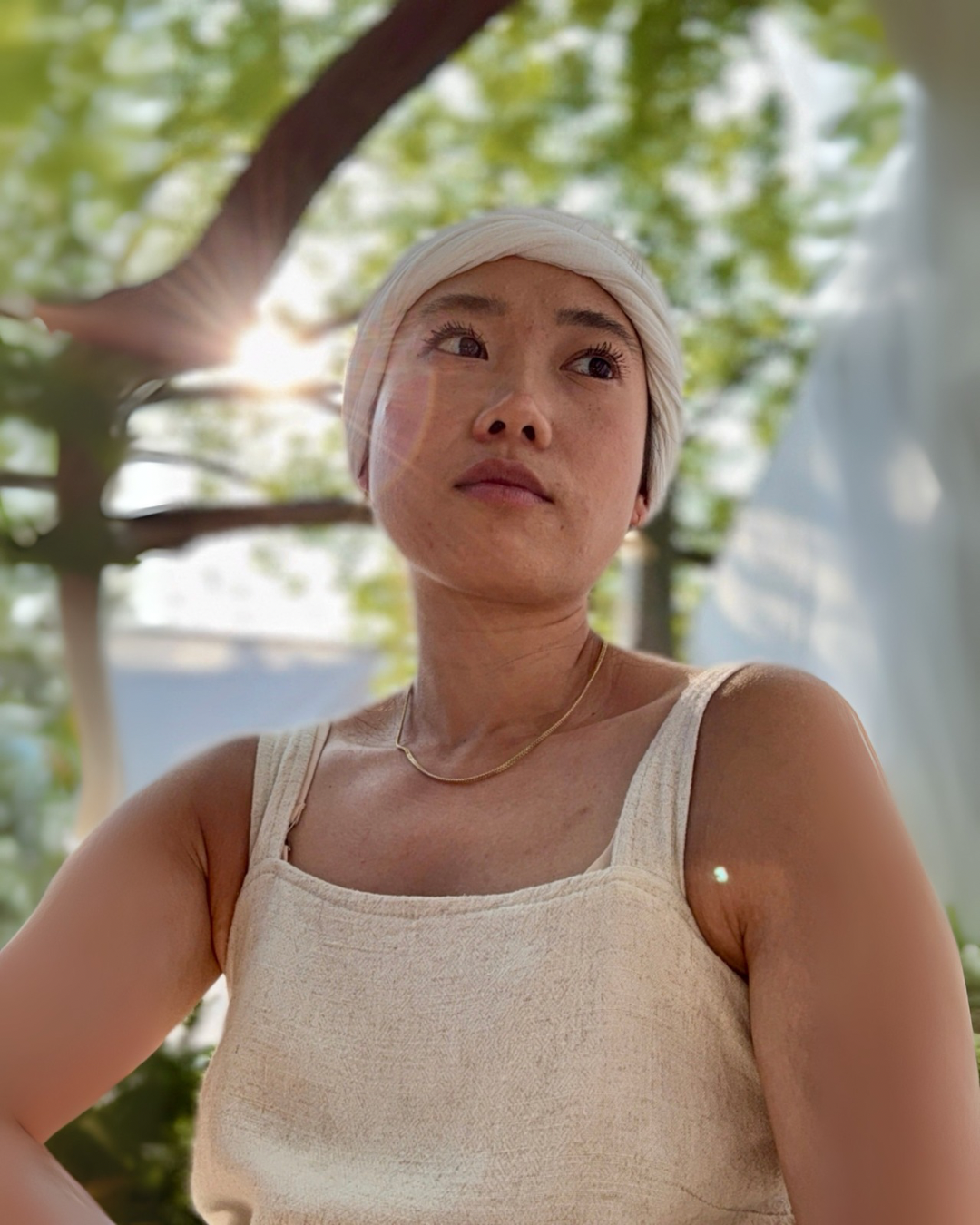
Kundalini Yoga 101
This isn’t your typical style of yoga - it’s a practice for mental, energetic, and nervous system fitness.
In this course, you’ll learn the foundations of kundalini yoga in a way that’s grounded, accessible, and distinctively linked to modern science. Designed by an engineer with an analytical mind, each chapter builds up logically to help you understand both the why and the how of the practice. While its roots are spiritual, the emphasis here is on practical application and measurable impact. Through intentional movement, physical postures (asana), breathwork (pranayama), meditation, and energetics, you’ll begin to reconnect with yourself - not through force - but through rhythm, breath, and awareness.
This course invites an open mind and personal experimentation. Whether you’re new to yoga or simply new to kundalini, this practice helps shift mental and emotional patterns, clear internal clutter, and strengthen your ability to stay calm, focused, and regulated in everyday life. You don’t need to be flexible. You just need to be curious.
You’re invited to take what resonates & leave the rest. Enjoy!
-
Chapter 1: Roots & Context of Kundalini Yoga
-
Lesson 1: Welcome to Kundalini Yoga 101
Kundalini yoga is one way back to connection: with your breath, your body, and your inner steadiness. This course is all about making it your own; take what resonates, leave the rest.
-
Lesson 2: What is Kundalini Yoga?
Known as the yoga of awareness, pranayamas, kriyas, mantras, and meditation helps you tune into your internal landscape with clarity, steadiness, and self-responsibility.
-
Lesson 3: Historical & Spiritual Lineage
This practice draws from ancient yogic traditions, tantric roots, and Sikh-inspired practices; all woven together to support spiritual awakening and everyday awareness.
-
Lesson 4: A Glimpse of Yogic Philosophy
Yogic philosophy offers practical maps for self-awareness. We explore foundational frameworks like the Eight Limbs of Yoga, the Five Koshas, the Ten Bodies, and the relationship between Dharma and Karma.
-
Lesson 5: Link to Modern Science
Modern science is beginning to explain how breath, movement, and sound used in kundalini yoga can reshape the nervous system and support lasting inner change.
-
Lesson 6: The Practice is the Teacher
True wisdom lies in the practice itself - not in any one person. A reminder to approach teachings with discernment and to trust your direct experience over dogma.
-
-
Chapter 2: Breathwork (Pranayama)
-
Lesson 1: What is Breath? What is Prana?
Breath is the first access point for transformation (physical, mental, and energetic). Conscious breathing becomes a gateway to nervous system regulation, emotional release, and spiritual vitality.
-
Lesson 2: The Nasal Cycle
The body doesn’t breathe evenly through both nostrils all the time. It follows a natural rhythm - subtly alternating dominant airflow between the left and right sides.
-
Lesson 3: Common Breathing Techniques
Intentional breathing is one of the most direct ways to influence your energy, mood, and nervous system. Learn about foundational pranayama techniques used in kundalini yoga.
-
Lesson 4: Long Deep Breathing
This foundational breath technique works by slowing and expanding your breath to restore balance in both the body and mind.
-
Lesson 5: Ujjayi Breathing
This warming, oceanic breath creates gentle internal heat while deepening focus and presence. Often used to sustain energy and build concentration during physical movement or stillness.
-
Lesson 6: Alternate Nostril Breathing (Nadi Shodhana)
This breath purifies the ida and pingala channels, calms the nervous system, and prepares the mind for deeper meditative states. Includes an introduction to breath retention (kumbhaka).
-
Lesson 7: Sitali Pranayam
This cooling breath offers instant relief for heat, agitation, and overstimulation by drawing air in through a curled tongue or teeth.
-
Lesson 8: Breath of Fire
This energizing breath is rapid and rhythmic, stimulating the nervous system and supports detoxification on both physical and emotional levels.
-
-
Chapter 3: Complete Action (Kriya)
Full course launching in September 2025. Be the first to explore the full experience.
Understanding Energy Exchange: Our Pricing Philosophy
In the yogic tradition, there's a powerful principle of "energy exchange." This isn't just about money; it's about the reciprocal flow of value and commitment that deepens a student's experience and honours the teacher's dedication. When there's a balanced exchange, the learning becomes more potent and truly integrates.
To embody this principle while ensuring Kundalini Yoga 101 remains accessible, we offer a sliding scale pricing model. This allows you to choose the financial contribution that genuinely reflects your current financial capacity and the value you feel you're receiving. Make a donation and send a note to tiffany@raisingpotters.com to receive a code to access the full course.
What you’ll learn
-
You'll develop the ability to regulate your nervous system, reduce anxiety, and feel more grounded even when life feels chaotic.
-
Learn how movement and mantra can quiet mental noise and help you access steadier attention and clearer thinking.
-
You'll develop a deeper awareness of your internal landscape—learning how to recognize and regulate stress responses, interpret bodily cues, and strengthen your connection to intuition.
Meet your instructor
*
Meet your instructor *
TIFFANY WONG
I teach kundalini yoga and chakra flow with a focus on making the practice feel accessible, emotionally honest, and energetically intelligent. My own experience with yoga is realizing it is not a performance, but as a practice that invites us to turn inwards and reconnect with ourselves gently.
My own path into yoga wasn’t graceful and I spent most of my life avoiding it. My body was not flexible at all and the chaos in my mind made stillness feel impossible. But in 2019, I stumbled into a kundalini yoga class disguised as a “meditation and soundbath” and I left with a weight off my shoulder. The mantras gave my mind a focal point to focus on. The kriyas worked with my natural (and limited) range of motion. The practice energized me in a way I hadn’t felt before, tapping into muscles and parts of my body I wasn’t familiar with.
It wasn’t until a few years later - during a period of deep burnout and emotional exhaustion from the corporate world - that I found my way back to the mat. I found temporary relief in Tulum, away from all the triggers in the city, questioning everything. That’s where I crossed paths with Gurmukh and returned to the practice. Slowly, something began to shift.
Since then, I’ve completed my 200-hour vinyasa and hatha training in Toronto and travelled to Amritsar, India to study an additional 200-hour of kundalini yoga under Sat Dharam Kaur. The experience of practicing in Amritsar, with the sounds of the Golden Temple in the background, reminded me that yoga is not about escape - it’s about awareness and intention.
As someone with a left-brain, analytical mindset and a background in engineering, I continue to explore kundalini yoga with logic and healthy skepticism, deconstructing the practice to understand its inner workings when possible. My teaching is shaped by my personal experience and by the influence of mentors here in Ontario, many of which who are teachers at Lotus Yoga Center; Dharm Kaur, Joanna Baron, Tara Abrams, Annie Keshishian, and Eva Blumenfeld. I’m endlessly grateful for their guidance.
Through Raising Potters, I aim to share this work in a way that feels grounded, clear, and kind. Whether you’re new to the practice or just returning after time away, I hope this space offers something steady to come back to.
Course FAQ
-
The practices in this course are drawn from the system of kundalini yoga, a lineage rooted in the tantric and yogic traditions of India. While its modern format has evolved through different teachers and influences, the foundational tools - pranayama (breathwork), kriya (sequence of intentional movement), mantra (sound), mudra (hand gestures), and meditation - have been preserved and adapted over centuries as a means to support self-awareness, energetic balance, and expanded consciousness.
Most of what I share comes through my training in my 200-hour kundalini yoga teacher training with Sat Dharam Kaur in Amritsar, India; alongside continued study and practice with mentors in Canada including Dharm Kaur, Joanna Baron, Tara Abrams, Annie Keshishian, and Eva Blumenfeld.
This course does not follow rigid doctrine. Instead, it’s a curated experience and I have tried my best to respect the source traditions and layer in the context of modern science, nervous system understanding, and personal agency. You’re encouraged to take what resonates and leave the rest.
-
Kundalini yoga is a spiritual practice, but it’s not religious. It doesn’t require you to subscribe to any particular belief system, deity, or tradition. Instead, it offers tools (like breathwork, mantra, and meditation) that help you connect inward, build self-awareness, and expand your energy and presence.
That said, the roots of kundalini yoga are embedded in ancient yogic and tantric traditions from India, where practices were often intertwined with spiritual frameworks. Some elements (like chanting in Gurmukhi or Sanskrit) may feel devotional, but you’re always invited to explore them in a way that aligns with your own worldview.
In this course, I offer these practices through a grounded, inclusive lens with reverence for where they came from and openness for how they can be adapted. Whether you experience them as calming, clarifying, sacred, or simply supportive, that’s entirely up to you.
-
No prior experience is needed. This course was created for people who are curious about self-awareness, energy, and nervous system support - even (and especially) if traditional yoga hasn’t resonated with them before!
You don’t need to be flexible, serene, or able to sit still. In fact, many of the tools in kundalini yoga like dynamic breathwork and rhythmic movement are designed to help you work through restlessness, not bypass it. The practices meet you where you are and offer structure that supports clarity and inner steadiness.
Everything is explained in a practical, accessible way, and you’re encouraged to move at your own pace. Meditation, here, doesn’t mean “empty your mind”—it means tuning in, moment by moment, with curiosity and care.
Thanks for stopping by.
Did these resources help you? Consider donating $15 to support in return to keep this work going.



